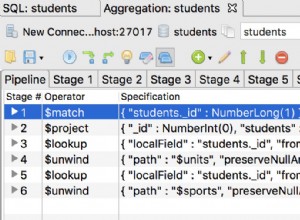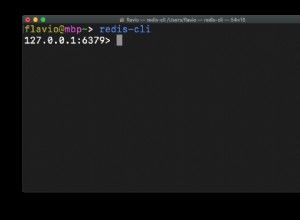Abilitare la memorizzazione nella cache nell'app di avvio primaverile è molto semplice. Dovresti solo seguire tre passaggi.
- Definisci la configurazione della cache
- Aggiungi EnableCaching a qualsiasi classe di configurazione
- Fornire un bean CacheManager
Per Redis, abbiamo RedisCacheManager che può essere configurato e creato.
Configurazione della cache
@Configuration
@Getter
@Setter
@ConfigurationProperties(prefix = "cache")
public class CacheConfigurationProperties {
// Redis host name
private String redisHost;
// Redis port
private int redisPort;
// Default TTL
private long timeoutSeconds;
// TTL per cache, add enties for each cache
private Map<String, Long> cacheTtls;
}
Imposta i loro valori tramite le proprietà o il file yaml come
cache.redisHost=localhost
cache.redisPort=6379
cache.timeoutSeconds=1000
cache.cacheTtls.cach1=100
cache.cacheTtls.cach2=200
Dopo aver creato la configurazione, puoi creare la configurazione della cache per RedisCacheManger dal builder.
@Configuration
@EnableCaching
public class CacheConfig {
private static RedisCacheConfiguration createCacheConfiguration(long timeoutInSeconds) {
return RedisCacheConfiguration.defaultCacheConfig()
.entryTtl(Duration.ofSeconds(timeoutInSeconds));
}
@Bean
public LettuceConnectionFactory redisConnectionFactory(CacheConfigurationProperties properties) {
RedisStandaloneConfiguration redisStandaloneConfiguration = new RedisStandaloneConfiguration();
redisStandaloneConfiguration.setHostName(properties.getRedisHost());
redisStandaloneConfiguration.setPort(properties.getRedisPort());
return new LettuceConnectionFactory(redisStandaloneConfiguration);
}
@Bean
public RedisCacheConfiguration cacheConfiguration(CacheConfigurationProperties properties) {
return createCacheConfiguration(properties.getTimeoutSeconds());
}
@Bean
public CacheManager cacheManager(
RedisConnectionFactory redisConnectionFactory, CacheConfigurationProperties properties) {
Map<String, RedisCacheConfiguration> cacheConfigurations = new HashMap<>();
for (Entry<String, Long> cacheNameAndTimeout : properties.getCacheTtls().entrySet()) {
cacheConfigurations.put(
cacheNameAndTimeout.getKey(), createCacheConfiguration(cacheNameAndTimeout.getValue()));
}
return RedisCacheManager.builder(redisConnectionFactory)
.cacheDefaults(cacheConfiguration(properties))
.withInitialCacheConfigurations(cacheConfigurations)
.build();
}
}
Se stai utilizzando il cluster Redis, aggiorna le proprietà della cache come indicato. In questo alcuni bean diventerebbero primari se si desidera un bean specifico per la cache piuttosto che rendere privati questi metodi.




